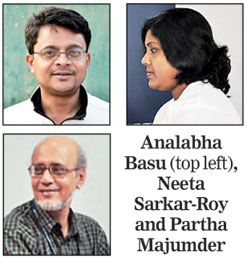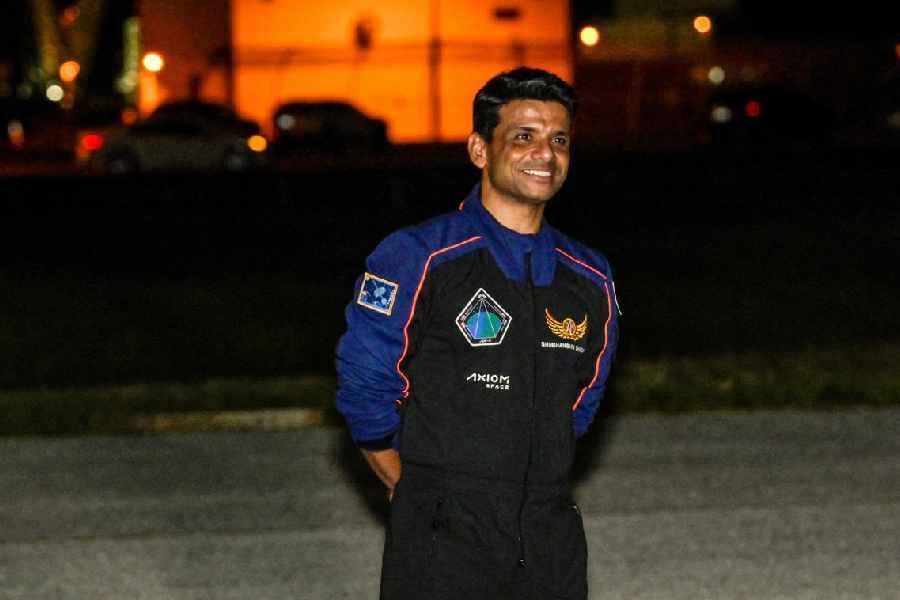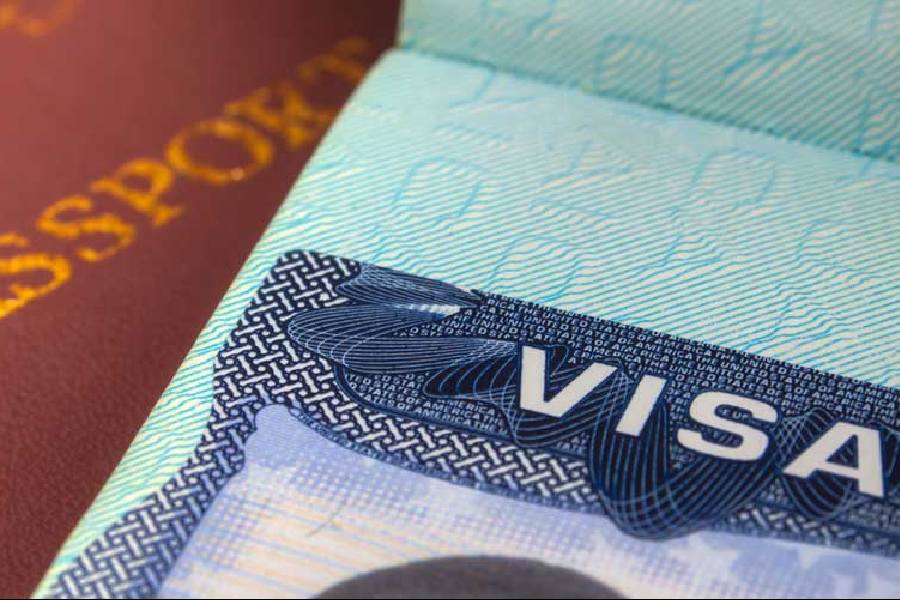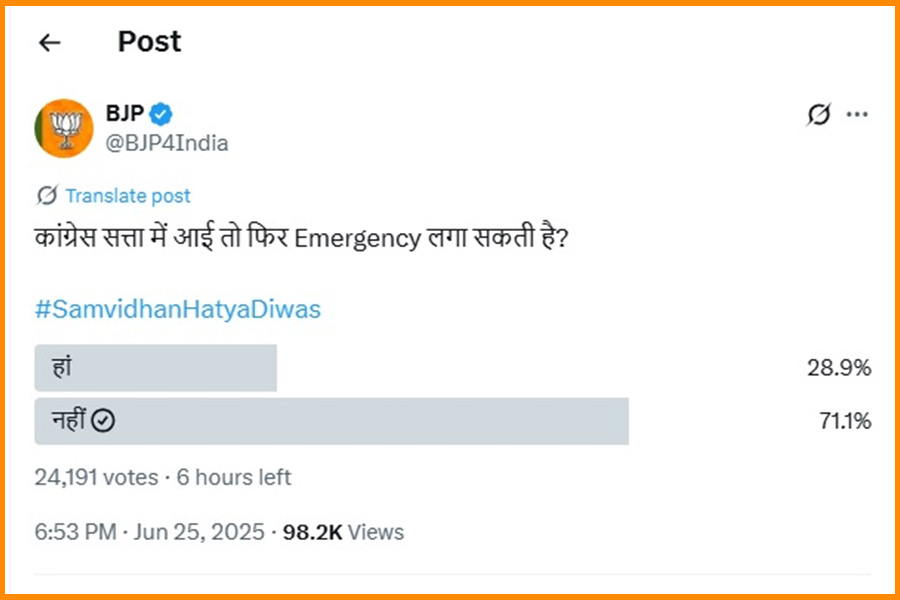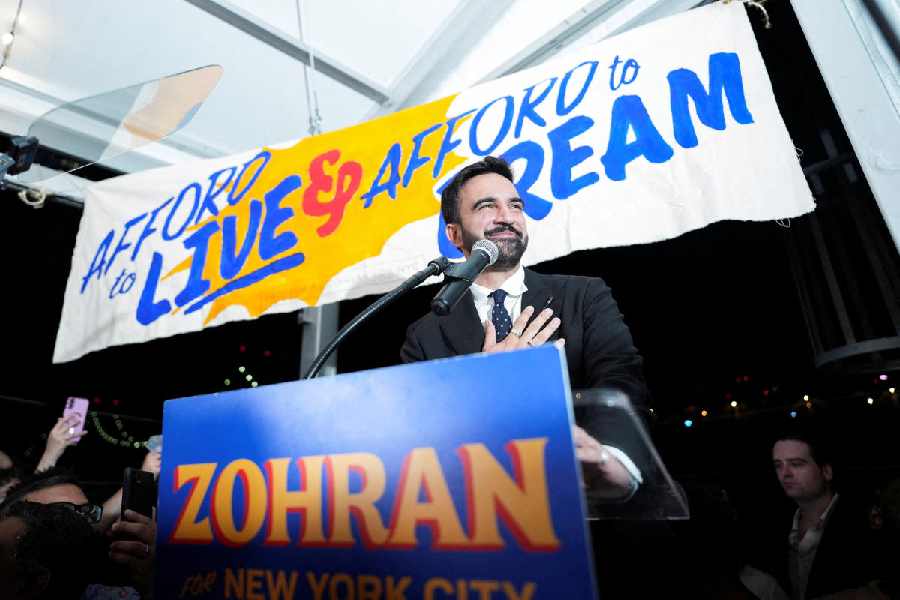
New Delhi, Jan. 25: A genetic study has traced the emergence of a strict caste system in India to about 1,575 years ago, indicating that the Gupta dynasty imposed social strictures on populations that had until then mixed and mated largely unfettered.
The study, by scientists at the National Institute of Biomedical Genomics at Kalyani in Bengal, has also shown that five ancestral populations -- not two as inferred earlier --- spawned the tapestry of India's present-day population diversity.
Earlier studies by Indian and US scientists had indicated that people across the country mated without concern for class, caste or ethnic barriers for over 2,000 years before the advent of the caste system.
Those studies had also suggested that most present-day mainland Indians have descended from two ancient groups called the ancestral North Indians (ANI) and the ancestral South Indians (ASI).
"We've now identified a sharp window of time that marks a consolidation of the caste system," Partha Majumder, the director of the Kalyani institute who led the new study, told The Telegraph.
The findings were published today in the Proceedings of the National Academy of Sciences, a research journal.
Majumder and his colleagues Analabha Basu and Neeta Sarkar Roy analysed the genetic makeup of 367 people from 20 populations chosen to represent the diversity of India's population.
They picked Khatris from northern India, Brahmins from Bengal and Gujarat, Iyers and other Dravidian speakers from southern India, Marathas from Maharashtra and several tribes from central and southern India and the Andaman and Nicobar Islands, among others.
Their research aimed at reconstructing India's population history by studying subtle differences in genomic makeup that can reveal information about individuals' ancestry, their genetic distance from others, and signatures of endogamy --- marriage only within one's community --- in populations.
Their study shows that most populations on mainland India owe their ancestry to four groups: the ANI, the ASI and two others -- an ancestral Tibeto-Burman (ATB) group, and an ancestral Austro-Asiatic (AAA) group.
The Jarawas and the Onges share their ancestry with present-day Pacific islanders, implying a distinct ancestral population for these Andaman and Nicobar tribes.
The genetic evidence also suggests that almost all upper-caste populations began to practise endogamy about 70 generations ago after a long period of unrestricted mixing.
"The gene flow across these populations came to an abrupt end about 1,575 years ago, assuming an average of 22 years for each generation," Majumder said.
"We went back to history books and found that this period coincides with the reign of the Gupta emperors."
The scientists say their findings suggest that the Gupta rulers -- possibly Chandragupta II or Kumaragupta I -- used the state machinery of a developing political economy to enforce social and moral strictures leading to strict and widespread endogamy.
"I don't have a dispute with this suggestion," said Shatrughna Sharan Singh, professor of ancient Indian history at Patna University.
"An early version of the caste system may have emerged during the Vedic times, perhaps as far back as 1,200 BC, but it is possible that the caste system based on micro-division of labour consolidated itself during the reign of the Guptas."
The scientists say that endogamy wasn't adopted quickly everywhere. "Low levels of gene flow continued to occur between certain populations. We can see signatures of such gene flow in present-day people," Basu said.
The study, for instance, suggests that across eastern and northeastern India, Bengal's Brahmins continued to admix with Tibeto-Burman populations until the emergence of the Buddhist Pala dynasty in the eighth century.
"This is an important (research) paper," said David Reich, professor of genetics at the Harvard Medical School, who had seven years ago led an independent effort to reconstruct India's population history that had pointed to two ancestral groups: ANI and ASI.
"We had excluded the Austro-Asiatic and Tibeto-Burman speakers from our analysis as we wanted to understand the gradient of ancestry seen mainly in Indo-European and Dravidian speakers," Reich told this newspaper.
"The history of Tibeto-Burman speakers and Austro-Asiatic speakers and the Andaman and Nicobar tribals is very important even though these groups comprise a small fraction of the present-day population."
Majumder and his colleagues say their genetic study also suggests that the census counts of the Austro-Asiatic and Tibeto-Burman speakers in India are "gross underestimates" of the extent of the AAA and ATB genetic components in present-day populations.
Many present-day Indians who speak Indo-European languages or even Dravidian languages may thus have genetic components they inherited from AAA or ATB groups.
"Languages evolve much faster than genes," Majumder said. "The evolution of language has masked the genetic backgrounds of some populations."

